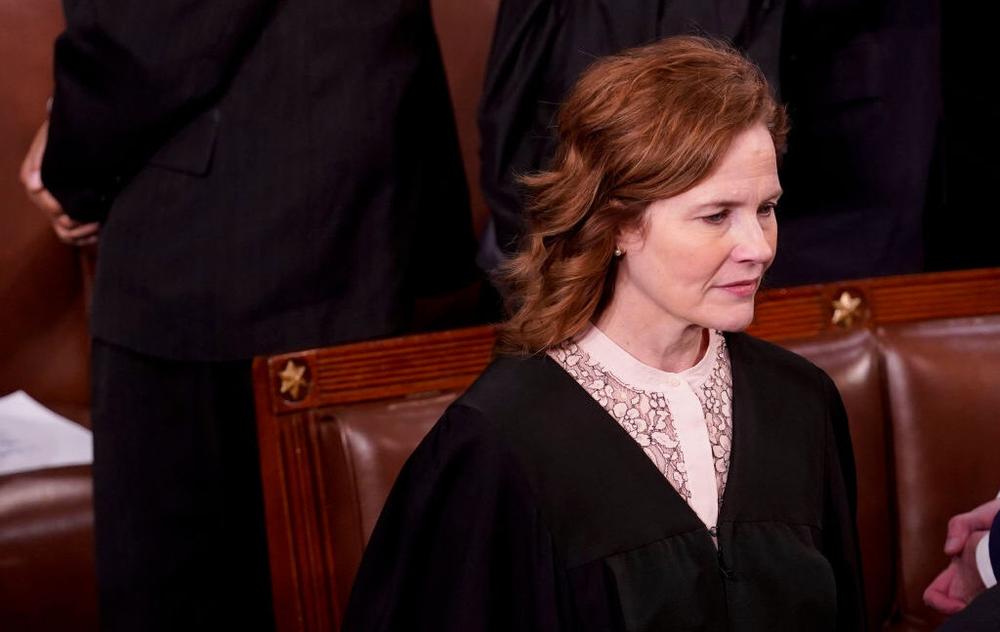Shortly after the Trump Administration took office, it started cancelling grants for things it had disagreements with: funding for pandemic preparation, efforts to diversify the scientific workforce, those that targeted minority health issues, and more. These terminations were challenged in court, and a consolidated case was heard in the District of Massachusetts, pitting the government against individual researchers, organizations that represent them, and states that host research institutions.
The result was a decisive win for the scientists. As the ruling explained, the government's termination efforts violated a statute against "arbitrary and capricious" policies, resulting in a stay that both blocked implementation of the policy and restored the flow of research funding.
That stay remained intact through appeals that brought it to the Supreme Court, which released its ruling on Thursday. As the result is a complicated split among the Justices, the stay against the policy itself remains intact. However, a slim majority decided that government funding issues are required to be heard by a different court, and cannot be issued as part of the same ruling. So, researchers who lost their funding due to the now-defunct policy will remain de-funded.
Partial overlaps
A combination of five Justices ultimately led to the final outcome, but disagreed significantly in their reasoning, leading to three different approaches in the text of the decision. Two of them, Thomas and Alito, would have granted the government a lift of all aspects of the stay, but chose not to explain their reasoning. Gorsuch penned an explanation, in which he was partly joined by Kavanaugh, who felt the need to issue a separate one. Gorsuch viewed the commitment to fund grants as the equivalent of a contract in which the government is a party. And, by law, those cases belong in the Court of Federal Claims.
(The motivation for this written explanation appears to be that they thought an earlier decision, Department of Education v. California, had explained that this was the case. So, Gorsuch and Kavanaugh are disappointed that, because the circumstances are somewhat different in this case, they have to reiterate the same conclusions. It also gives Gorsuch, who has overturned multiple precedents during his relatively short time on the court, the opportunity to proclaim, "This Court’s precedents, however, cannot be so easily circumvented.")
Since there is no indication that the government would see the grant money paid back by the researchers if they ultimately lost, these justices decided that the government was facing a greater harm if forced to pay them. Thus, they chose to lift the stay and allow the grant terminations to move forward.
Kavanaugh was the only one to address whether the government's policy was arbitrary and capricious. In it, he focused on the same thing our headline regarding the earlier ruling had: that DEI hadn't ever been defined by the government before it implemented this policy. He essentially argues that not all terms of policies need to be defined, so the stay should be lifted. In doing so, he ignores a lot of additional evidence considered by the judge, such as the fact that lists of grants to be terminated originated among the non-experts in DOGE, and were simply rubber stamped by the NIH.
In many recent cases, these four had been joined by the other Republican appointees, Roberts and Barrett. But Roberts abandoned them in the entirety, leaving Barrett to cast the deciding vote. She agreed with her colleagues that challenges to the grant funding needed to go to the Court of Federal Claims. But she also agreed with past precedent that challenges to federal policy decisions belonged in the District Court. So, she concluded that this really should have been two separate cases: one against the policy, one against the grant terminations.
Since the stay against the termination of grant funding was issued by what she determined was the wrong court, she lifted it.
At the same time, she concluded that the District Court was the right venue to contest the policy. And she felt that the government's appeal didn't address this issue. "It is not obvious, for instance, that NIH’s guidance is final agency action," her decision states. "Yet the Government did not press this argument—or any other—in its stay application." So, she's left the stay against the policy in place. Meaning the government cannot block future grant funding under the current guidance as the case works its way through appeals.
The dissents
The primary dissent was written by Chief Justice Roberts, and joined in part by the three Democratic appointees, Jackson, Kagan, and Sotomayor. It is a grand total of one paragraph, and can be distilled down to a single sentence: "If the District Court had jurisdiction to vacate the directives, it also had jurisdiction to vacate the 'Resulting Grant Terminations.'”
Jackson, however, chose to write a separate and far more detailed argument against the decision, mostly focusing on the fact that it's not simply a matter of abstract law; it has real-world consequences.
She notes that existing law prevents plaintiffs from suing in the Court of Federal Claims while the facts are under dispute in other courts (something acknowledged by Barrett). That would mean that, as here, any plaintiffs would have to have the policy declared illegal first in the District Court, and only after that was fully resolved could they turn to the Federal Claims Court to try to restore their grants. That's a process that could take years. In the mean time, the scientists would be out of funding, with dire consequences.
Yearslong studies will lose validity. Animal subjects will be euthanized. Life-saving medication trials will be abandoned. Countless researchers will lose their jobs. And community health clinics will close.
Jackson also had little interest in hearing that the government would be harmed by paying out the grants in the meant time. "For the Government, the incremental expenditure of money is at stake," she wrote. "For the plaintiffs and the public, scientific progress itself hangs in the balance along with the lives that progress saves."
With this decision, of course, it no longer hangs in the balance. There's a possibility that the District Court's ruling that the government's policy was arbitrary and capricious will ultimately prevail; it's not clear, because Barrett says she hasn't even seen the government make arguments there, and Roberts only wrote regarding the venue issues. In the mean time, even with the policy stayed, it's unlikely that anyone will focus grant proposals on the disfavored subjects, given that the policy might be reinstated at any moment.
And even if that ruling is upheld, it will likely take years to get there, and only then could a separate case be started to restore the funding. Any labs that had been using those grants will have long since moved on, and the people working on those projects scattered.

 Chainsaw Man Short to Play Exclusively at Halloween Horror Nights
Chainsaw Man Short to Play Exclusively at Halloween Horror Nights